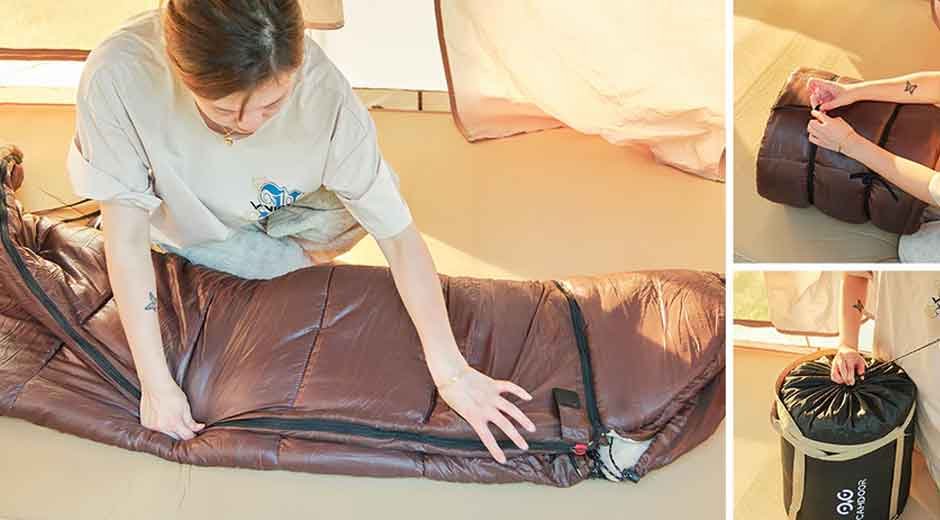In many Japanese homes, space is a precious resource. Whether living in a city apartment or a compact suburban home, finding room for extra bedding when guests stay over can be a real challenge. Traditionally, families have used futons as their go-to sleeping solution for visitors. However, storing bulky futons and drying them regularly can take up significant time and space.
This has led to a growing trend among Japanese households: using sleeping bags as an alternative to futons for overnight guests. Originally designed for outdoor camping, modern sleeping bags now come with materials and designs that make them ideal for indoor comfort. They are compact, hygienic, and surprisingly cozy—perfect for households looking to offer warm hospitality without compromising on living space.
Why Sleeping Bags Fit Modern Japanese Lifestyles?
Japanese living spaces are known for their efficiency, but also for their limitations when it comes to storage. Many apartments have minimal closet space, and storing several sets of futons can quickly consume valuable room. This is where 寝袋 become a practical solution.
Unlike futons, which require regular airing and take up significant storage space, sleeping bags are lightweight, easy to fold, and compact to store. A standard sleeping bag can be rolled into a small cylinder that fits neatly in a closet, under the bed, or even on a shelf. For households that host guests only a few times a year, this saves both time and effort in preparation.
Additionally, the simplicity of setup appeals to busy modern lifestyles. Instead of spreading out futon layers and adjusting blankets, a sleeping bag requires only unzipping and spreading it on the floor. Guests can enjoy a clean, cozy sleep without the host needing to invest in or maintain multiple futon sets.
Comfort and Warmth: Not Just for Camping
A common misconception is that sleeping bags are cold or uncomfortable for indoor use. However, many designs today feature soft, breathable fabrics that rival the comfort of futons. The inside lining often feels smooth against the skin, while insulation levels are perfectly suited for indoor temperatures common in Japanese homes.
For instance, during mild seasons such as spring and autumn, a medium-weight sleeping bag provides just the right amount of warmth. In winter, when temperatures drop, pairing the sleeping bag with a thin blanket or a heating mat can easily replicate the comfort of a futon. During summer, lightweight sleeping bags or those with zippers that open fully can be used as flat blankets, offering versatility throughout the year.
The quiet fabric texture is another comfort advantage. Many indoor-appropriate sleeping bags are designed to minimize rustling noise when turning over at night, ensuring a peaceful rest for both guests and hosts.
Hygiene and Maintenance: A Cleaner Way to Host
Futons require frequent maintenance—airing them outside to prevent moisture buildup, brushing off dust, and sometimes even professional cleaning. For those living in apartments without balconies or limited sunlight, this can be inconvenient.
Sleeping bags, in contrast, are easier to keep clean and fresh. Most are machine-washable, and their quick-drying materials prevent the buildup of mold and odor, especially in Japan’s humid summers. This makes them ideal for people who prioritize cleanliness but lack space to maintain multiple futon sets.
After each guest stay, you can simply wash, dry, and roll the sleeping bag back into its storage bag. This not only saves time but also ensures that the bedding is hygienically ready for the next visit—a thoughtful touch for hosts who value tidiness and comfort.
Practical for Any Guest: From Family to Friends
Sleeping bags are highly adaptable for different types of guests. For solo visitors, a standard-sized sleeping bag offers individual comfort and warmth. For couples or parents staying over with small children, a ダブルサイズの寝袋 allows two people to sleep comfortably together without the need for multiple futons.
Children often find sleeping bags fun to use—especially during family visits or sleepovers. The cocoon-like design feels cozy and secure, turning bedtime into a playful experience. For elderly guests, choosing a wider rectangular shape makes it easier to move or stretch during sleep, offering a sense of familiarity closer to traditional bedding.
Saving Space Without Sacrificing Warmth or Style
Japanese interior design often emphasizes minimalism, clean lines, and efficient use of space. A sleeping bag fits perfectly within that philosophy. When not in use, it can be stored discreetly, preserving a tidy living environment.
Some homeowners even choose sleeping bags in neutral or natural colors that blend with home decor, allowing them to double as throw blankets or emergency bedding. In regions prone to earthquakes or power outages, keeping a few sleeping bags at home also provides a dual function—for hospitality and emergency preparedness—adding practical value to an already versatile item.
Easy Setup and Storage: Hospitality in Minutes
When guests arrive unexpectedly, preparation time is crucial. With a sleeping bag, there’s no need to unfold bulky futons or fetch multiple blankets. Simply unroll it on a tatami mat, carpet, or even a yoga mat for extra cushioning.
After use, it can be neatly rolled up and secured with straps or placed in its carrying bag. This makes post-visit cleanup fast and effortless, helping you maintain your home’s neatness without additional strain. For compact apartments, this convenience cannot be overstated—it’s hospitality made simple.
Environmental and Economic Benefits
Another reason many Japanese households are switching to sleeping bags is sustainability. Instead of owning multiple futon sets that require regular washing, airing, and replacing, one or two high-quality sleeping bags can serve for years with minimal upkeep.
From an environmental standpoint, this reduces fabric waste and energy consumption associated with large-scale washing or frequent replacement. Economically, sleeping bags are also cost-efficient, offering long-term value compared to purchasing and maintaining futon sets that may only be used a few times a year.
Tips for Creating a Cozy Guest Space
To elevate your guest’s comfort, combine the sleeping bag with simple touches that make them feel at home:
Place a soft floor mat or rug underneath for cushioning, add a small pillow for neck support, and offer a light blanket for adjustable warmth. If your guest room doubles as a living space, use foldable screens or partitions to give privacy.
Even in compact Japanese apartments, these small details can transform an ordinary room into a welcoming guest space. The combination of thoughtful preparation and a clean sleeping bag reflects genuine omotenashi—the spirit of Japanese hospitality.
Conclusion: The Smart, Space-Efficient Future of Home Hospitality
As urban living spaces in Japan continue to shrink, practicality and comfort must coexist. Sleeping bags provide an innovative solution—blending space-saving efficiency with genuine comfort. They are hygienic, easy to maintain, and flexible enough to suit any season or type of guest.
Whether you live in Tokyo, Osaka, or a cozy countryside home, switching from extra futons to sleeping bags can simplify guest preparation while enhancing the warmth of your hospitality. In today’s fast-paced, space-conscious Japan, this smart approach allows you to welcome guests with comfort, cleanliness, and care—without sacrificing a single inch of space.











